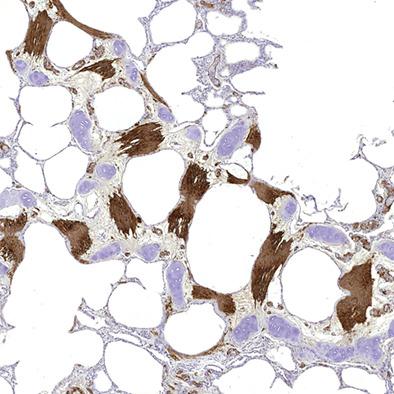当前位置:
X-MOL 学术
›
J. Morphol.
›
论文详情
Our official English website, www.x-mol.net, welcomes your
feedback! (Note: you will need to create a separate account there.)
Microscopic anatomical, immunohistochemical, and morphometric characterization of the terminal airways of the lung in cetaceans
Journal of Morphology ( IF 1.5 ) Pub Date : 2020-12-18 , DOI: 10.1002/jmor.21304 Cristina Otero-Sabio 1 , Cinzia Centelleghe 1 , Livio Corain 2 , Jean-Marie Graïc 1 , Bruno Cozzi 1 , Miguel Rivero 3 , Francesco Consoli 3 , Antonella Peruffo 1
Journal of Morphology ( IF 1.5 ) Pub Date : 2020-12-18 , DOI: 10.1002/jmor.21304 Cristina Otero-Sabio 1 , Cinzia Centelleghe 1 , Livio Corain 2 , Jean-Marie Graïc 1 , Bruno Cozzi 1 , Miguel Rivero 3 , Francesco Consoli 3 , Antonella Peruffo 1
Affiliation

|
The lungs of cetaceans undergo anatomical and physiological adaptations that facilitate extended breath‐holding during dives. Here, we present new insights on the ontogeny of the microscopic anatomy of the terminal portion of the airways of the lungs in five cetacean species: the fin whale (Balaenoptera physalus); the sperm whale (Physeter macrocephalus), the Cuvier's beaked whale (Ziphius cavirostris); the bottlenose dolphin (Tursiops truncatus); and the striped dolphin (Stenella coeruleoalba). We (a) studied the histology of the terminal portion of the airways; (b) used immunohistochemistry (IHC) to characterize the muscle fibers with antibodies against smooth muscle (sm‐) actin, sm‐myosin, and desmin; (c) the innervation of myoelastic sphincters (MESs) with an antibody against neurofilament protein; and (d) defined the diameter of the terminal bronchioles, the diameter and length of the alveoli, the thickness of the septa, the major and minor axis, perimeter and section area of the cartilaginous rings by quantitative morphometric analyses in partially inflated lung tissue. As already reported in the literature, in bottlenose and striped dolphins, a system of MESs was observed in the terminal bronchioles. Immunohistochemistry confirmed the presence of smooth muscle in the terminal bronchioles, alveolar ducts, and alveolar septa in all the examined species. Some neurofilaments were observed close to the MESs in both bottlenose and striped dolphins. In fin, sperm, and Cuvier's beaked whales, we noted a layer of longitudinal smooth muscle going from the terminal bronchioles to the alveolar sacs. The morphometric analysis allowed to quantify the structural differences among cetacean species by ranking them into groups according to the adjusted mean values of the morphometric parameters measured. Our results contribute to the current understanding of the anatomy of the terminal airways of the cetacean lung and the role of the smooth muscle in the alveolar collapse reflex, crucial for prolonged breath‐holding diving.
中文翻译:

鲸类动物肺末端气道的显微解剖学、免疫组织化学和形态学特征
鲸类动物的肺会经历解剖学和生理学的适应,这有助于在潜水期间延长屏气时间。在这里,我们提出了对五种鲸类动物肺气道末端部分微观解剖结构个体发育的新见解:长须鲸(Balaenoptera physalus);抹香鲸 (Physeter macrocephalus)、居维叶喙鲸 (Ziphius cavirostris);宽吻海豚(Tursiops truncatus);和条纹海豚(Stenella coeruleoalba)。我们 (a) 研究了气道末端部分的组织学;(b) 使用免疫组织化学 (IHC) 用针对平滑肌 (sm-) 肌动蛋白、sm-肌球蛋白和结蛋白的抗体来表征肌纤维;(c) 肌弹性括约肌 (MES) 与神经丝蛋白抗体的神经支配;(d) 通过在部分膨胀的肺组织中进行定量形态测量分析,定义了终末细支气管的直径、肺泡的直径和长度、隔膜的厚度、软骨环的长轴和短轴、周长和截面积。正如文献中已经报道的那样,在宽吻海豚和条纹海豚中,在终末细支气管中观察到了 MES 系统。免疫组织化学证实在所有检查物种的终末细支气管、肺泡管和肺泡隔中存在平滑肌。在宽吻海豚和条纹海豚的 MES 附近都观察到了一些神经丝。在鳍、精子和居维叶喙鲸中,我们注意到有一层纵向平滑肌从终末细支气管到肺泡囊。形态测量分析允许根据测量的形态测量参数的调整平均值将鲸类物种之间的结构差异进行量化。我们的研究结果有助于目前对鲸类肺末端气道解剖结构的理解以及平滑肌在肺泡塌陷反射中的作用,这对于长时间屏气潜水至关重要。
更新日期:2020-12-18
中文翻译:

鲸类动物肺末端气道的显微解剖学、免疫组织化学和形态学特征
鲸类动物的肺会经历解剖学和生理学的适应,这有助于在潜水期间延长屏气时间。在这里,我们提出了对五种鲸类动物肺气道末端部分微观解剖结构个体发育的新见解:长须鲸(Balaenoptera physalus);抹香鲸 (Physeter macrocephalus)、居维叶喙鲸 (Ziphius cavirostris);宽吻海豚(Tursiops truncatus);和条纹海豚(Stenella coeruleoalba)。我们 (a) 研究了气道末端部分的组织学;(b) 使用免疫组织化学 (IHC) 用针对平滑肌 (sm-) 肌动蛋白、sm-肌球蛋白和结蛋白的抗体来表征肌纤维;(c) 肌弹性括约肌 (MES) 与神经丝蛋白抗体的神经支配;(d) 通过在部分膨胀的肺组织中进行定量形态测量分析,定义了终末细支气管的直径、肺泡的直径和长度、隔膜的厚度、软骨环的长轴和短轴、周长和截面积。正如文献中已经报道的那样,在宽吻海豚和条纹海豚中,在终末细支气管中观察到了 MES 系统。免疫组织化学证实在所有检查物种的终末细支气管、肺泡管和肺泡隔中存在平滑肌。在宽吻海豚和条纹海豚的 MES 附近都观察到了一些神经丝。在鳍、精子和居维叶喙鲸中,我们注意到有一层纵向平滑肌从终末细支气管到肺泡囊。形态测量分析允许根据测量的形态测量参数的调整平均值将鲸类物种之间的结构差异进行量化。我们的研究结果有助于目前对鲸类肺末端气道解剖结构的理解以及平滑肌在肺泡塌陷反射中的作用,这对于长时间屏气潜水至关重要。











































 京公网安备 11010802027423号
京公网安备 11010802027423号